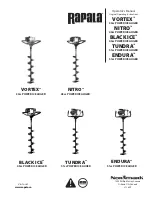
AMBE-2000™ Vocoder Chip Users Manual
Version 4.92, June, 08
DVSI Confidential Proprietary, Subject to Change
Page 12
Visit us at
www.dvsinc.com
purposes, within it. The only data from the Framed format that is typically sent across the transmission channel under design
are the actual encoded bits at the desired rate.
In Framed mode, it is the responsibility of the designed system to pass enough information along with the encoded bits such
that the Framed format needed by the decoder can be reconstructed on the other side. This extra information, or overhead, is
going to be very specific to the system under design, but at a minimum needs to pass enough information to reliably reconstruct
the 20msec frame structure at the other end for the decoder.
In Unframed mode the data coming out of the encoder can be thought of as a continuous stream of voice data with the framing
information embedded within the encoded bits. One advantage of this type of set-up is that the system does not have to add
any bandwidth for overhead to the channel. The disadvantage is that the decoder needs 10-12 incoming frames in order to gain
synchronization with the data stream before it can properly synthesize the speech waveform. Also, the Unframed mode only
commits a single bit per frame to maintain data alignment. In higher error rate channels the performance will be improved by
adding more bits per frame to the alignment information (which is more easily performed when using Framed mode).
Additional flexibility is given to the channel interface to the encoder and decoder by allowing the AMBE-2020™ Vocoder
Chip to run in Passive or Active modes. In Passive mode, data strobes are provided by an external source, while in Active
mode, data strobes are provided by the AMBE-2020™ Vocoder Chip. Serial interfaces can be run in Passive or Active modes.
See Section 4 for full details and timing for both Framed and Unframed data.
2.2.4
Speech and FEC Rate Selection Overview
The total coded bit rate is the sum of two components, the Speech Data bit rate and the Forward Error Correction (FEC) Data
bit rate. The addition of FEC data to the speech data allows the decoder to be able to correct a limited amount of errors within
each frame should they arrive corrupted. If the channel is expected to have more errors then more bits should be dedicated to
FEC. At the same time, voice quality will increase if the number of speech bits is increased.













































